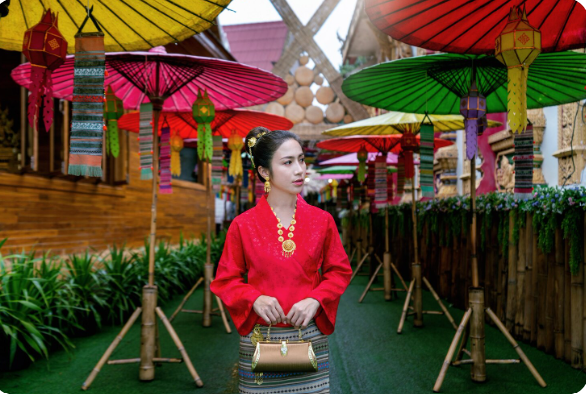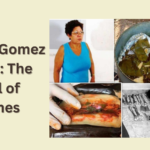Introduction
To truly understand Thailand, you need to look beyond its bustling cities and famous beaches. The heart of the nation beats within its smaller communities, organized into unique administrative units called tumbons. These sub-districts are the building blocks of Thai society, shaping everything from local governance to cultural identity.
This deep dive will explore the world of Tumbons in Thailand. We will uncover their historical roots, see how they function today, and understand their vital role in community life. For travelers, expats, and anyone curious about Thai culture, learning about tumbons offers a richer perspective on the Land of Smiles.
What Exactly Are Tumbons in Thailand?
Thailand’s administrative structure is layered. The country is divided into provinces (changwat), which are then broken down into districts (amphoe). The next level down is the sub-district, or tumbon. Each tumbon is further divided into villages (muban).
This system forms the foundation of local governance in Thailand. While provinces and districts handle broader administrative tasks, the tumbon is where government policy meets daily life. It is the level closest to the people, responsible for implementing projects, managing local resources, and preserving community traditions.
Think of a tumbon as a large neighborhood or a small town. It’s a collection of villages that share a common administrative body, a local identity, and often, a shared history. There are over 7,000 tumors across Thailand, each with its own distinct character.
A Brief History of Thai Administrative Divisions
The concept of organizing local territories is not new in Thailand. The modern structure, however, has its roots in the late 19th century during the reign of King Chulalongkorn (Rama V). As part of his sweeping reforms to centralize the Siamese kingdom and modernize its bureaucracy, he established the thesaphiban system.
This system created a clear hierarchy of provinces, districts, sub-districts (tumbons), and villages. The goal was to create a more efficient and unified administrative network that connected the central government in Bangkok to the most remote parts of the country.
Over the past century, the role of the tumbon has evolved. Initially created for administrative control, they have gained more autonomy and responsibility, particularly following decentralization efforts in the 1990s. Today, many are governed by a Tambon Administrative Organization (TAO), an elected local government body responsible for community development and public services.
The Role of the Tumbon in Modern Thailand
The tumbon is more than just a line on a map; it’s a dynamic center of community life. Its functions are diverse, touching upon governance, culture, and economic development.
Local Governance and Community Development
The Tambon Administrative Organization (TAO) is the engine of local governance. Led by an elected council and a chief executive (nayok), the TAO is responsible for:
- Public Infrastructure: Building and maintaining local roads, bridges, and drainage systems.
- Public Services: Providing clean water, waste management, and public health services.
- Education and Welfare: Supporting local schools, caring for the elderly, and assisting vulnerable populations.
- Economic Promotion: Supporting local businesses, agriculture, and tourism through initiatives like the “One Tambon One Product” (OTOP) program.
The OTOP program is a perfect example of the tumbon’s economic role. This government initiative encourages each sub-district to develop and promote a unique, high-quality product, from handwoven textiles and intricate wood carvings to specialty foods. This fosters local entrepreneurship and preserves traditional craftsmanship.
The Cultural Significance of Tumbons
Beyond administration, the tumbon is a guardian of local culture. It is at this level that many of Thailand’s unique traditions, festivals, and dialects are preserved. The cultural significance of tumbons is immense, as they provide a sense of belonging and shared identity for residents.
Many tumbons are known for specific cultural highlights:
- Festivals: A tumbon might host a unique annual festival, such as a rocket festival (Bun Bang Fai) in the northeast or a long-boat race in a riverside community. These events bring the community together and attract visitors.
- Craftsmanship: Certain tumbons are famous for a particular craft, passed down through generations. For example, a tumbon in Chiang Mai might be renowned for its celadon pottery, while another in the south is known for its batik fabric.
- Historical Landmarks: Temples, ruins, and other historical sites within a tumbon are often cared for by the local community, serving as focal points for both spiritual and social life.
Notable Tumbons and Their Unique Stories
To bring the concept to life, let’s look at a few examples of tumbons that showcase this diversity.
- Koh Kret, Nonthaburi: Located on an artificial island in the Chao Phraya River, the tumbon of Koh Kret is famous for its Mon community and their distinctive pottery. A weekend trip here offers a glimpse into a unique cultural enclave, with bustling markets, ancient temples, and pottery workshops.
- Mae Salong Nok, Chiang Rai: Situated in the northern mountains, this tumbon has a fascinating history. It was settled by former Kuomintang soldiers who fled from Yunnan, China. Today, it is known for its stunning tea plantations, Chinese-influenced culture, and cool climate, making it a popular destination for tea lovers.
- Ban Prasat, Nakhon Ratchasima: This tumbon is home to an important archaeological site where artifacts dating back over 3,000 years have been discovered. The local community, with support from the TAO, has developed the area for tourism, creating a museum and homestay programs that allow visitors to learn about the region’s ancient history.
Why Understanding Tumbons Matters?
For anyone looking to connect with Thailand on a deeper level, understanding the role of the tumbon is essential.
- For Travelers: Looking at a map of tumbons can help you discover off-the-beaten-path destinations. Visiting a local OTOP market or a community festival provides a more authentic experience than sticking to major tourist hubs. It allows you to support local economies directly.
- For Expats: If you live in Thailand, your daily life is directly impacted by your local TAO. Knowing how your tumbon functions can help you navigate local services, participate in community events, and build stronger connections with your neighbors.
- For Cultural Enthusiasts: The tumbon is a microcosm of Thai society. Studying them reveals the incredible diversity of the country’s cultures, traditions, and local economies. It highlights how a nation can be both unified and wonderfully varied.
Conclusion
In conclusion, tumbons are the living, breathing cells that make up the body of Thailand. They are where history is preserved, culture thrives, and communities are built. By appreciating the importance of these Thai administrative divisions, we gain a richer, more nuanced understanding of this fascinating country. So next time you travel in Thailand, think beyond the province or city—and consider the unique story of the tumbon you are in.






